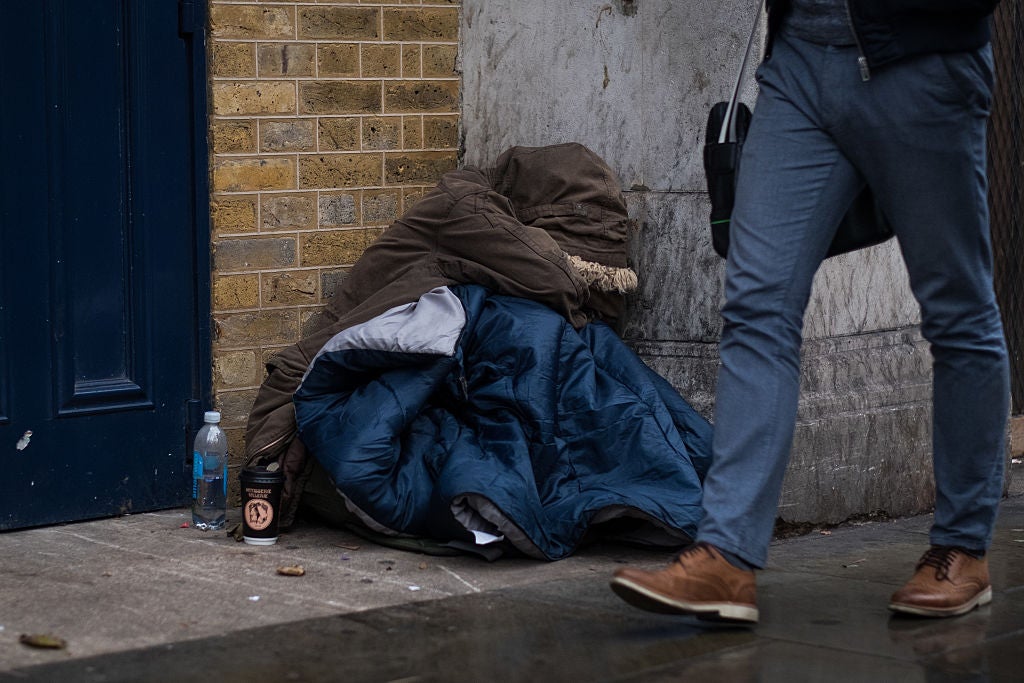Rural homelessness 'crisis' is being hidden as people sleep in barns and tents, think tank warns
Stigma and difficulty accessing local authority services also result in many cases of rural homelessness going undetected, research found

A “hidden crisis” of rural homelessness is going undetected because of a strong stigma and an inadequate strategy to tackle the issue in the countryside, a think tank has warned.
The study, carried out by the Institute for Public Policy Research (IPPR), found that many cases of homelessness in rural areas go undetected because people are likely to find alternative locations to sleep such as barns, tents, parked cars and fields away from public view.
The report stated: “Homelessness, traditionally depicted as an urban street phenomenon, is notably absent in people’s understanding of rural life.
“The stigma of being visibly homeless in rural areas can be much stronger than in urban areas and difficulties accessing local authority services can mean households remain uncounted in official records.”
The research used the 2011 Rural Urban Classification to categorise local authorities according to a six-point scale from rural to urban.
Between 2010 and 2016, mainly rural authorities recorded a 32 per cent increase in the number of rough sleepers. The figure jumped to 52 per cent for areas classified as largely rural.
“Given the likelihood that for every rough sleeper recorded, there will be a considerable number of hidden homeless ... the rise should not be dismissed,” the report said.
Head-count estimates were low in rural areas with more than a fifth of mainly rural areas having not recording a single rough sleeper in 2016.
In Tendring, for example, a largely rural local authority, rough sleepers were counted over a single night in 2016 and none were recorded.
The study found that while rough sleepers in the area were rare, they were “not unheard of” and a number of them may have never been identified.
However, other areas were reporting increasingly visible signs of street homelessness and a rise in demand for community-led drop-in services.
The research found that the method of recording rough sleepers was leading “to homelessness being more dispersed and less static and probably resulting in a significant underestimation".
Mainly and largely rural local authorities reported making 12,977 decisions on homelessness in the year 2015/16 - 11 per cent of the total of cases across England and a “sizable challenge” according to the report.
The report, called Right to home? Rethinking homelessness in rural communities, said that 6,270 families across England’s 91 predominantly rural local authorities were accepted as unintentionally homeless and in priority need last year.
In 16 of these local authorities, at least two in every 1,000 households were accepted as homeless, a ratio which is higher than in urban areas, the research found.
The IPPR think tank also found that poor economies of scale, long travel distances and insufficient travel networks, difficulty to access specialist services, isolated communities and the lack of emergency housing provision were exacerbating the issue in some rural areas.
The think tank argued that while the reasons for homelessness in urban and rural areas were often similar, including the ending of an assured shorthold tenancy or family breakdown and the fact that services to tackle homelessness are concentrated in urban areas, leaving rural communities to fend for themselves.
“Given the difficulties in accessing services and alternative accommodation, the impact could be even more significant for households in rural settings,” the report concluded.
Local authorities in rural areas can also face additional challenges such as lower levels of affordable homes and high demand for second and holiday homes.
The report said a one-size-fits-all approach towards homelessness could not be the solution and that the rural context must be taken into account by politicians.
It called on the Government to develop a new national homelessness strategy, which “must include an assessment of rural homelessness, covering its scale and nature and the distinct challenges faced by these areas” and rural-specific guidance on “how to prevent and relieve homelessness".
Hastoe, a housing association specialising in providing homes in rural areas, which commissioned the study, called on the Government to provide targeted and adequate advice and support to fight against homelessness in rural communities.
Subscribe to Independent Premium to bookmark this article
Want to bookmark your favourite articles and stories to read or reference later? Start your Independent Premium subscription today.

Join our commenting forum
Join thought-provoking conversations, follow other Independent readers and see their replies